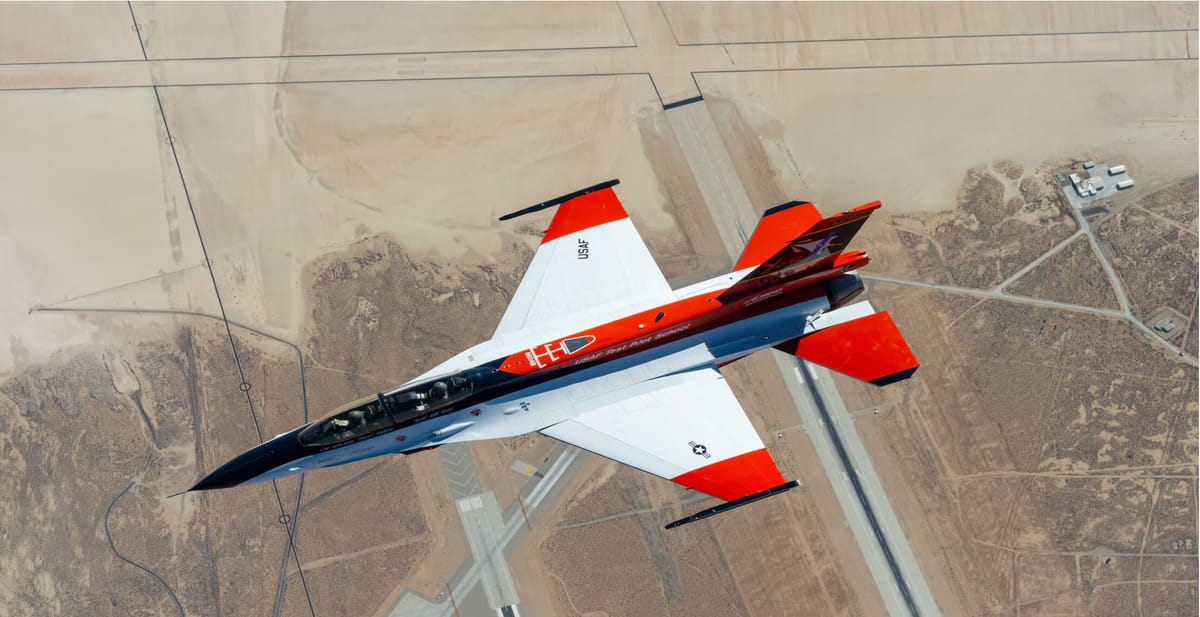
The U.S. Air Force has formally confirmed that an AI pilot developed by the Defense Advanced Research Projects Agency (DARPA) has successfully engaged in a real-world dogfight against a human-piloted F-16 fighter jet. This milestone marks a significant step forward in the integration of AI technology into aerospace and defense applications.
The exercises, which took place in September 2023 at the Edwards Air Force Base in California, saw DARPA's experimental X-62A aircraft, equipped with the AI pilot, face off against a human pilot in an F-16. The two aircraft demonstrated high-speed, close-proximity maneuvers, with the AI pilot showcasing its ability to autonomously control the X-62A in a complex combat scenario.
According to Lt. Col. Maryann Karlen, deputy commandant of the Air Force Test Pilot School, the dogfight involved "high aspect nose-to-nose engagements where we got as close as 2,000 feet at 1,200 miles per hour." The AI pilot's performance in this demanding situation highlights the rapid advancements in machine learning and autonomous systems.
DARPA's Air Combat Evolution (ACE) program, which began in December 2022, has been focused on developing an AI system capable of autonomously flying a fighter jet while adhering to the Air Force's safety protocols. Over the course of 21 test flights, the ACE team made over 100,000 lines of flight-critical software changes to refine the AI pilot's capabilities.
The successful dogfight marks a significant milestone in the ACE program's progress. As Bill Gray, the chief test pilot at the Air Force's Test Pilot School, stated, "Dogfighting was the problem to solve so we could start testing autonomous artificial intelligence systems in the air. Every lesson we're learning applies to every task you could give to an autonomous system."
While the dogfight's outcome has not been publicly disclosed, the mere fact that an AI pilot could engage in such a complex scenario against a skilled human adversary demonstrates the immense potential of AI in aerospace applications. As Secretary of the Air Force Frank Kendall noted, "The potential for autonomous air-to-air combat has been imaginable for decades, but the reality has remained a distant dream up until now."
The ACE program's success is the result of collaboration between academia, government, and private industry partners, including the Air Force Test Center, Air Force Research Laboratory, DARPA, the Air Force Test Pilot School, Johns Hopkins University, MIT, Calspan Corporation, Cubic Corporation, EpiSci, Lockheed Martin Skunk Works, and Shield AI.
As AI continues to advance at a rapid pace, its integration into defense applications raises both excitement and concerns. While the technology has the potential to enhance military capabilities and reduce risks to human personnel, it also raises questions about the ethical implications of autonomous weapons systems.
Looking ahead, DARPA plans to continue testing and refining the AI pilot's capabilities through 2024. The lessons learned from the ACE program are expected to inform future developments in autonomous systems for both military and commercial aerospace applications. As Secretary Kendall stated, "The first-ever use of machine-learning-based autonomy in flight-critical systems will serve as a foundation for future aerospace AI advances that are both safer and more reliable."

